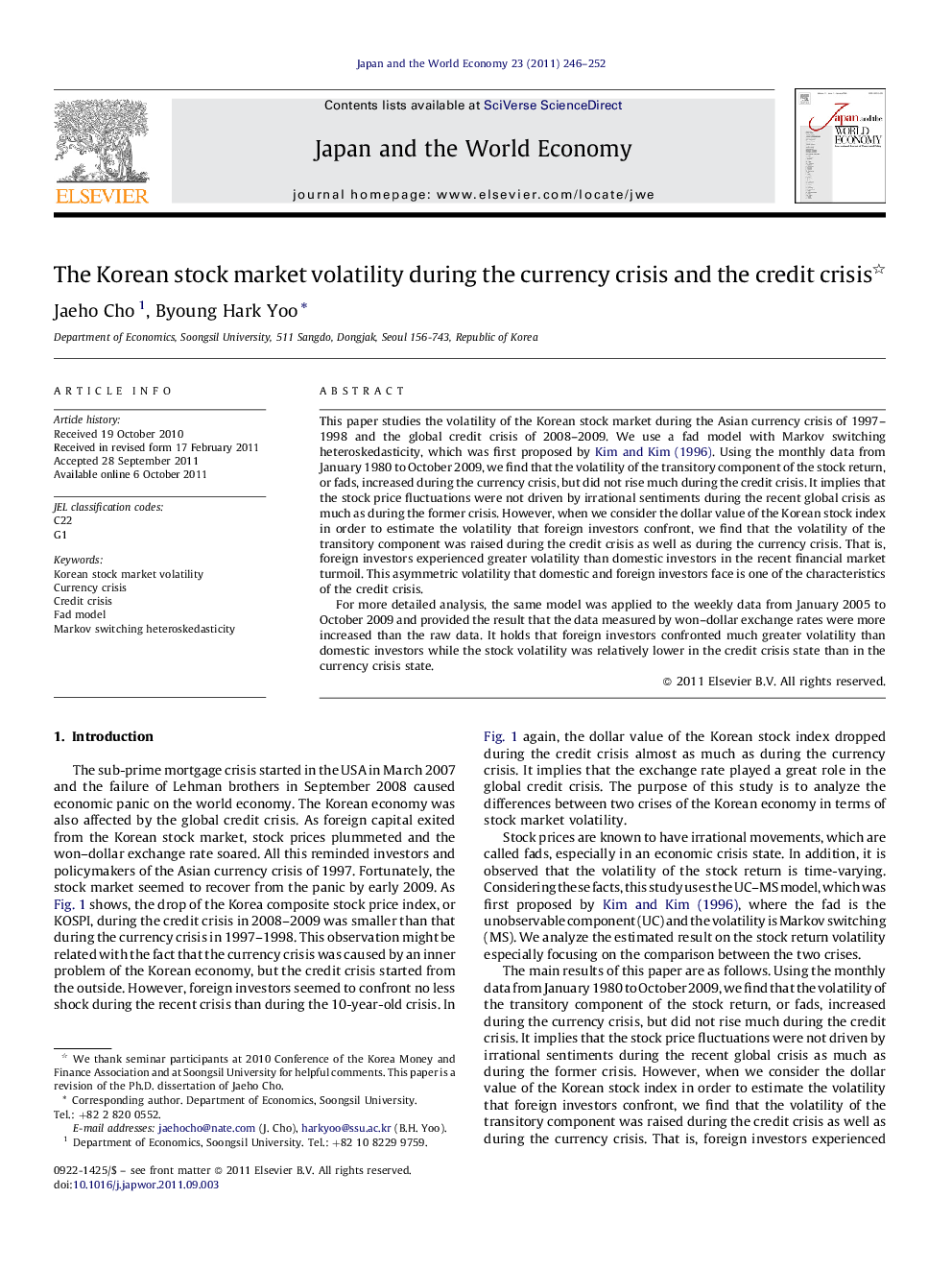| Article ID | Journal | Published Year | Pages | File Type |
|---|---|---|---|---|
| 5086202 | Japan and the World Economy | 2011 | 7 Pages |
This paper studies the volatility of the Korean stock market during the Asian currency crisis of 1997-1998 and the global credit crisis of 2008-2009. We use a fad model with Markov switching heteroskedasticity, which was first proposed by Kim and Kim (1996). Using the monthly data from January 1980 to October 2009, we find that the volatility of the transitory component of the stock return, or fads, increased during the currency crisis, but did not rise much during the credit crisis. It implies that the stock price fluctuations were not driven by irrational sentiments during the recent global crisis as much as during the former crisis. However, when we consider the dollar value of the Korean stock index in order to estimate the volatility that foreign investors confront, we find that the volatility of the transitory component was raised during the credit crisis as well as during the currency crisis. That is, foreign investors experienced greater volatility than domestic investors in the recent financial market turmoil. This asymmetric volatility that domestic and foreign investors face is one of the characteristics of the credit crisis.For more detailed analysis, the same model was applied to the weekly data from January 2005 to October 2009 and provided the result that the data measured by won-dollar exchange rates were more increased than the raw data. It holds that foreign investors confronted much greater volatility than domestic investors while the stock volatility was relatively lower in the credit crisis state than in the currency crisis state.
⺠We estimate the volatility of the Korean stock return using a fad model. ⺠Fads happened in 1997-1998 crisis but didn't much in 2008-2009 crisis. ⺠But, foreign investors have had fads even during the recent credit crisis.
